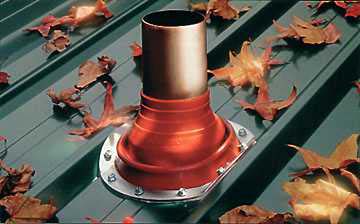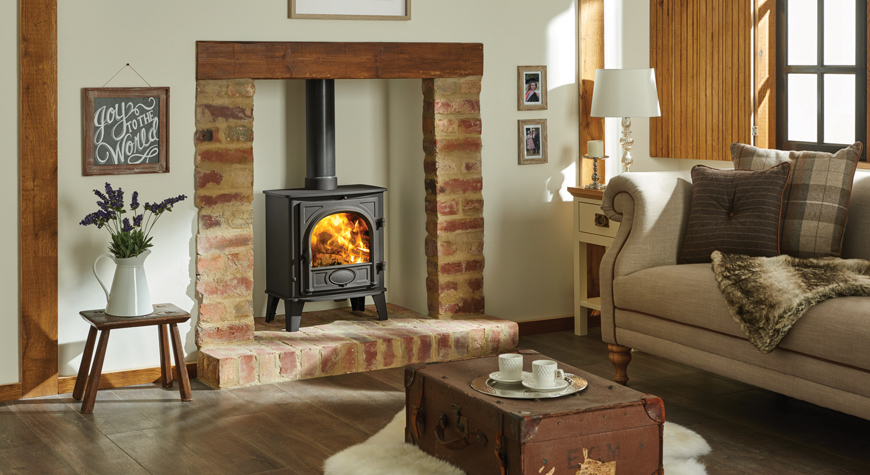While the experts make the process of installing a wood-burning or multifuel stove look fairly easy, there are many factors to take into consideration. One area is the introduction of roof flashing which effectively secures a stove flue pipe to the roof of the property. While some flue systems will pass through the sidewall and be connected in the appropriate manner, there are still many occasions where the flue pipe simply goes straight up through the roof. So, what does roof flashing do and is it really required?
Weatherproof seal
In simple terms roof flashing offers a weatherproof seal against the elements. The last thing you want is for rain to leak through your roof into your joists as this can not only cause major damage but is unsafe where electrics are involved. Therefore, the introduction of a simple piece of roof flashing will secure your property from the elements and ensure that the exit point for your stove flue pipe is safe and secure.
It is worth noting that for example where a twin wall pipe has an overall diameter of 200 mm this will require a hole of at least 300 mm in diameter in your roof. This is because of the “safety clearance to compostable materials” regulations which not only apply to the inner piping but also the exit pipe. There are two main types of roof flashing which are suitable for tiled roofs and other designs such as corrugated, felt, wooden and profiled roofs.
Flashing for tiled roofs

You often find that some of the important elements of any installation are relatively simple in design. This perfectly illustrates tiled roof flashings which is simply a silicon corn shaped exit hole mounted on a malleable aluminium base. The silicon cone can be cut to the exact size of the exit pipe while the malleable aluminium base is designed to slide under the tiles therefore creating weatherproofing for the hole.
The silicon cone is able to hug the exit pipe to the extent that no water will flow down therefore securing the flue liner and ensuring that the stove remains unaffected. Traditionally the silicon cone upper portion will be installed at pre-set 20% angle to take into account for the standard pitch of property roofs.
Flashing for non-tiled roofs

As there are also an array of different materials used in the modern day roofing industry it is no surprise to learn that there is a different type of roof flashing specifically for non-tiled properties. This consists of a surrounding aluminium strip as opposed to a base plate which allows it to be fitted to the often varied contours of non-tiled roofs. The silicon cone is built to accommodate an array of different diameter flue pipes and will again be cut to size. The aluminium strip surrounding the silicon cone is simply secured to the roof to create a weathertight seal.
Low temperature and high temperature roof flashing
Aside from the different types of silicon cone products available for various roof designs, you will need to decide whether low temperature or high temperature roof flashing is required. The industry guidance for this particular decision revolves around flue pipes of less than 5 metres and more than 5 metres. In essence the type of roof flashing required depends upon the distance the exit point is from the stove. Obviously, the nearer the stove the hotter the gases and the greater the potential risk therefore flue pipes within 5 metres of any stove will require high temperature flashing and those beyond 5 metres will require low temperature flashing. Contrary to popular belief, whether you have an insulated or uninsulated twin wall flue, this does not impact the point at which low and high temperature roof flashing is required.

